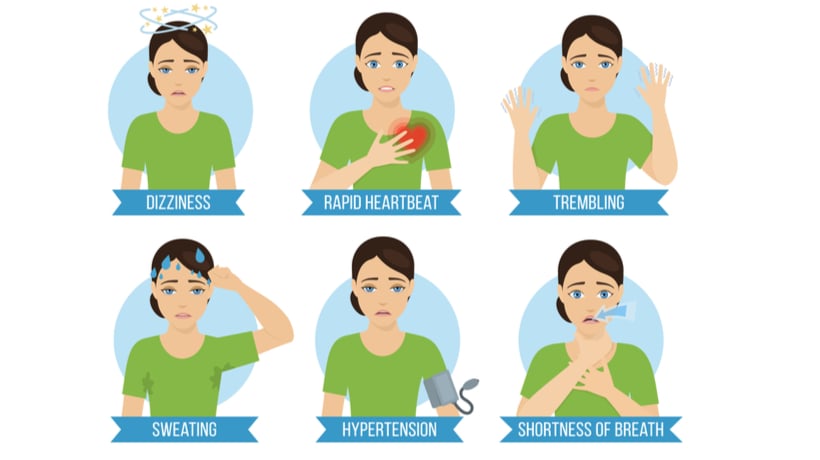If you’ve ever experienced a panic attack, you know how frightening it can be. It can feel as if you’re about to take your last breath at any moment. To make matters worse, the way your body reacts to what is happening seems as if it’s something way deadlier than panic. With symptoms that some people describe being similar to a heart attack (like rapid heart rate), telling the difference between the two may be harder than you think according to William Muerer, M.D.
Here are a few ways to tell the difference between a panic attack and a heart attack:
Chest Pain and Symptoms
According to the ADAA (Anxiety and Depression Association of America) panic attacks are characterized by sharp, stabbing pains in the middle of the chest while heart attacks give squeezing pain and pressure in the entire chest area. During a heart attack, pain may radiate outwards towards the arm, jaw, or shoulder blade. Panic attack symptoms like racing heart rate and tingling of the hands get better over time. However, symptoms of a heart attack like constant pain and shortness of breath can last for longer periods of time.
Duration
There is no definite way to know how long a panic attack will last, but symptoms usually resolve themselves in 20-30 minutes. With heart attacks, pain is continuous and can make you feel like it’ll never end. Pain caused by heart attacks also gets worse over time. The longer you wait, the more damage it can cause.
Onset
The onset of the attack is the best way to distinguish between the two. While both can have sudden onsets, the onset of a panic attack is usually caused by stress or anxiety. Long periods of stress on the body cause it to react. The onset of a heart attack follows some type of physical activity like climbing stairs, mowing the lawn, etc.
A complete list of symptoms for both panic attacks and heart attacks can be found below.
Panic Attacks:
- Increased or racing heart rate
- Sudden onset or onset during extreme stress or anxiety
- Pain that is localized to one small area
- Pain that usually occurs at rest
- Symptoms that resolve within 20 to 30 minutes
- Shortness of breath
- Sweating
- Tingling in the hands
- Pain that is relieved or worsened when you change positions
- Pain that can be reproduced or worsened by pressing over the area of pain
Heart Attacks:
- Escalating chest pain that reaches maximum severity after a few minutes
- Constant/squeezing pain, pressure, fullness or aching in the chest area
- Sudden onset during or following physical activity
- Pain and symptoms that get worse over time
- Pain or discomfort that travels or radiates from the chest to other areas, such as the arms, abdomen, back, shoulders, neck, throat or jaw
- Shortness of breath
- Near fainting
- Sweating
- Nausea and vomiting
Sources:



